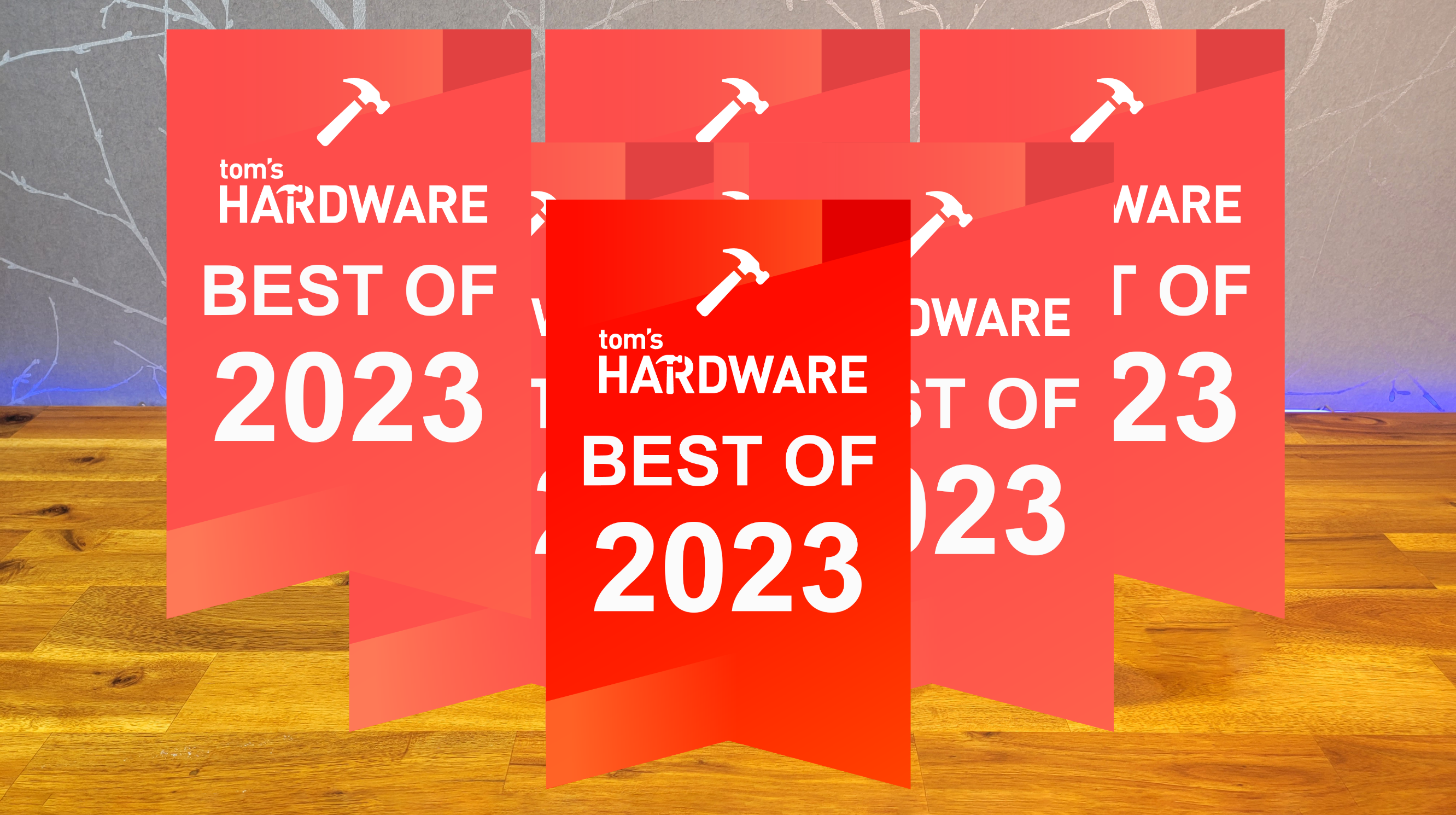
While artificial intelligence dominated the tech news headlines, 2023 was quietly a strong year for PC hardware and other enthusiast tech. For the most part, prices either stayed steady or fell on key components while systems and devices got faster.
The price of SSDs continued to fall while we saw a new generation of PCIe 5 drives break previous speed records. AMD retook the gaming crown with its Ryzen 7000X3D series of chips while Intel spent most of the year preparing for a more innovative 2024 (Raptor Lake Refresh was a bare-minimum release in the fall).
For most of the year, graphics cards were easy enough to come by, but a November run on top-of-the-line RTX 4090 cards made things a bit more difficult for those who want the best graphics card money can buy. We’re still waiting to see if a new king of GPUs emerges in 2024.
In the maker space, faster 3D printing went mainstream, though multicolor printing continued to evolve very slowly. Raspberry Pi fans got a welcome surprise when the Pi 5 launched in October and stocks of all Pis improved quite a bit. Accessories are still coming out.
With so many product launches taking place in the last year, we thought now would be a great time to look back at the best tech of 2023, before we dive headfirst into 2024.
Best CPU: AMD Ryzen 7 7800X3D
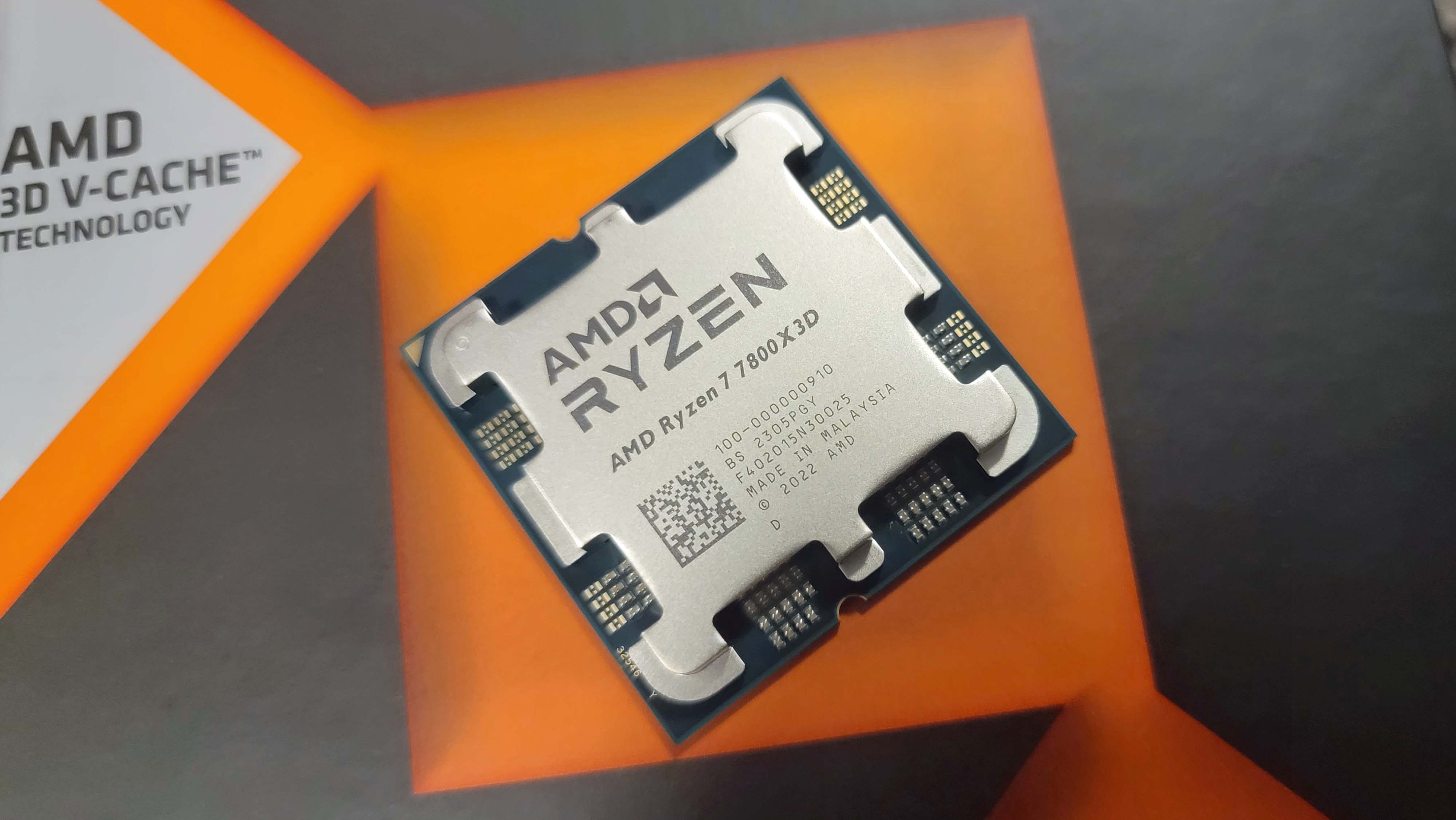
The fastest gaming money can buy. But at reasonable prices.
AMD’s Ryzen 7000X3D processors provide the fastest gaming performance on the market, helping Team Red keep its edge over Intel. These CPUs leverage AMD’s revolutionary 3D V-Cache, which uses cutting-edge chip stacking tech to boost gaming performance by increasing L3 cache to once-unthinkable amounts.
AMD’s lone Ryzen 7 5800X3D model, which launched last June on the previous-gen AM4 platform, came with only eight cores, had lower clock speeds than the standard chips, and used the company’s previous-gen Zen 3 architecture - yet it still propelled the company to the top of our list of Best CPUs for gaming.
AMD’s new X3D family brings the more modern Zen 4 architecture and broadens the stack out to 8-, 12- and 16-core models. All three of these models come with higher clock speeds than the previous generation, which helps reduce the tradeoffs in productivity workloads that we saw with the 5800X3D. The higher core count models will also offer up even more performance for the productivity-minded.
Despite offering two new models with extra cores this time around, it's the eight-core, 16-thread Ryzen 7 7800X3D that stands out as the go-to model for gamers with this generation. This chip delivers the lion’s share of 3D V-Cache’s gaming performance but at a much more affordable price point than the more-generously equipped X3D models. It sips power, too, serving as a cool and quiet platform that delivers leading gaming performance.
Read Review: AMD Ryzen 7 7800X3D
- Paul Alcorn
Best GPU: Nvidia RTX 4070
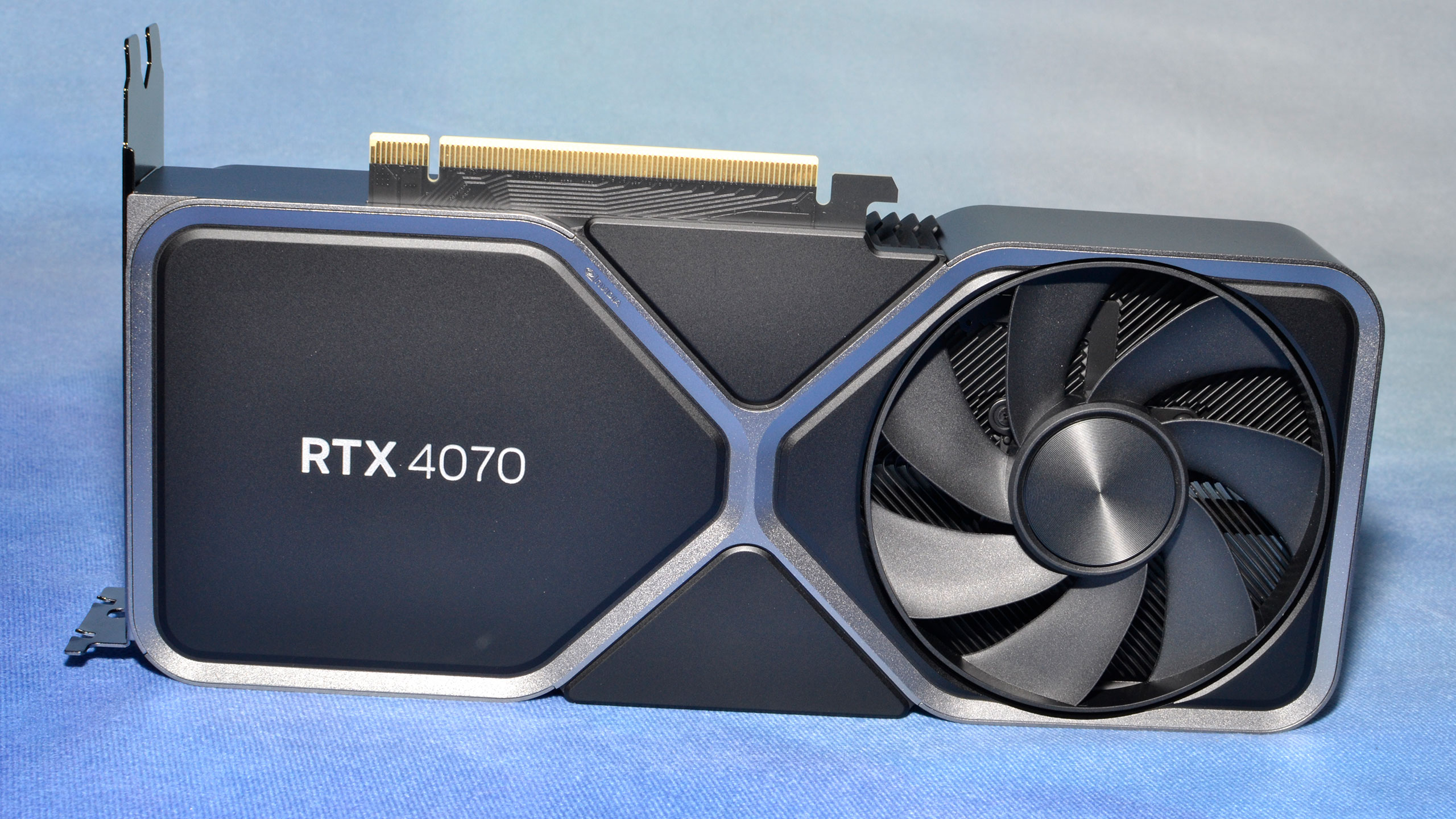
Fast performance, all the new features, and reasonable pricing
The latest generation of GPUs from Nvidia, AMD, and Intel have been disappointing, not because performance is terrible but because of excessive generational price increases and cutback features. Only one new GPU that launched this year really managed to poke its head above the rest of the market: the Nvidia RTX 4070.
It has all the features of the new Ada Lovelace architecture, including DLSS 3, improved ray tracing hardware, and AV1 video support, coupled with excellent efficiency. It also has 12GB of VRAM, which is at least enough that we're not super worried (see what we did there?) about it becoming outdated in the near future. In effect, it's the 2023 replacement for the previous generation RTX 3080, with reduced power use and actual retail availability at or below its $599 launch MSRP — we've seen it go on sale for as little as $520.
As for the rest of the market, the RTX 4090 and RTX 4080 launched last year, alongside the RX 7900 XTX/XT, so those aren't up for nomination this year. That leaves a whole bunch of other new GPUs to wallow in mediocrity. AMD's RX 7600, RX 7700 XT, and RX 7800 XT are basically lateral moves on performance and pricing in most workloads (AI being an exception), while Nvidia's RTX 4060 Ti and RTX 4060 took a step back on interface width and memory capacity — and the RTX 4060 Ti 16GB doesn't fully address the shortcomings. The RTX 4070 effectively wins by default, as the best of the worst.
Read Review: Nvidia RTX 4070
- Jarred Walton
Best SSD: Crucial T700
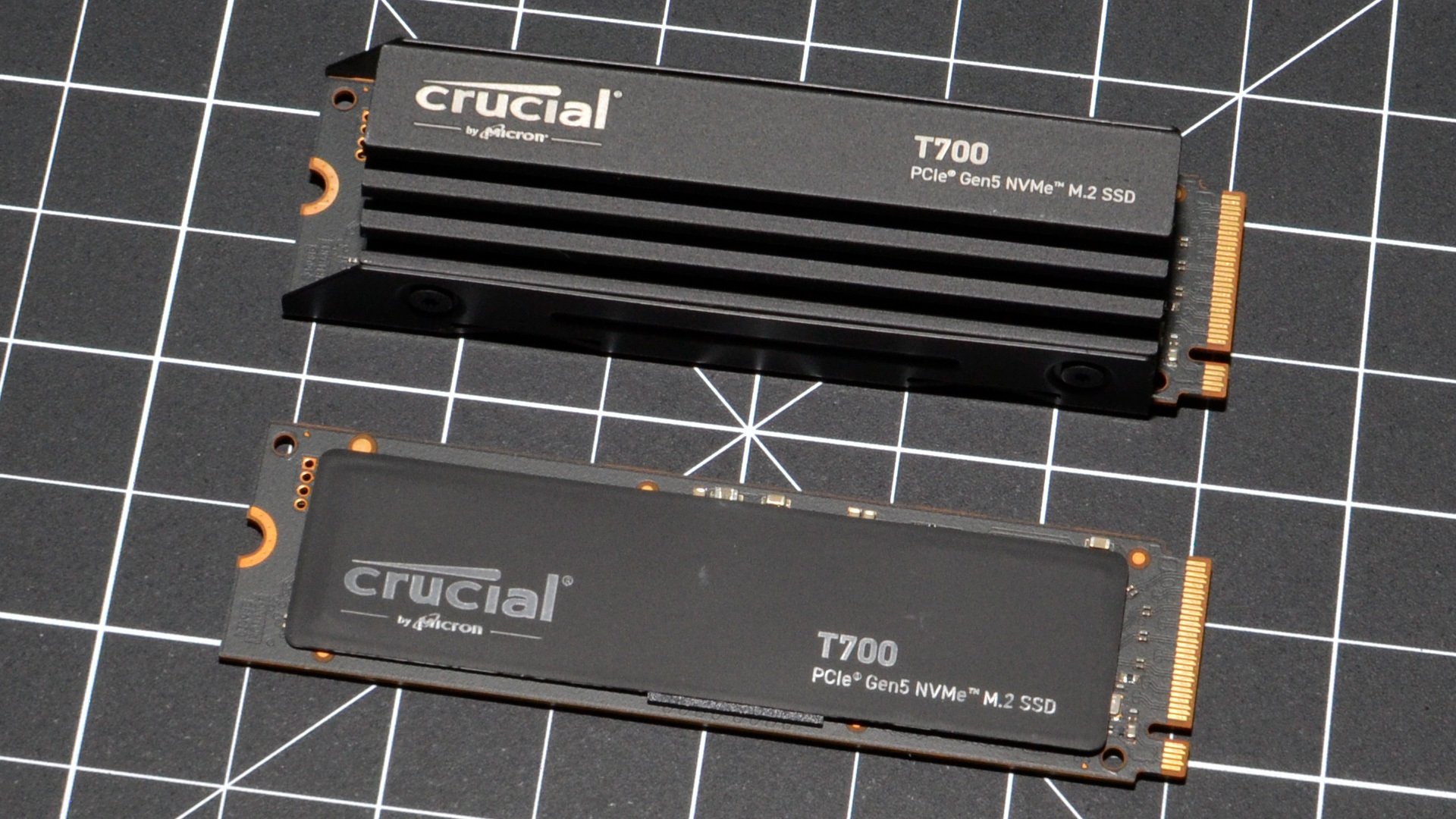
Incredibly fast storage, ushering in the PCIe 5.0 era
2023 was a great year for storage, with the first consumer PCIe 5.0 M.2 SSDs finally hitting the market. At the other end of the spectrum, prices for copious amounts of storage plummeted to record lows. Both are exciting trends, though prices are now on the rise, and long-term we're more interested in high-performance drives.
The Crucial T700 SSD kicked things off, sporting the Phison E26 controller with the latest Micron 232-layer TLC NAND. We've seen many other SSDs using effectively the same hardware — Adata Legend 970, Corsair MP700, Gigabyte Gen5 10000 and Gen5 12000, Inland TD510, Nextorage NN5Pro and NE5N, Seagate FireCuda 540, and Teamgroup Z540 — though Crucial had first dibs on higher clocked 2000 MT/s NAND while the competition had to make do with 1600 MT/s chips for a while, and no one has shipped an E26 drive with 2400 MT/s NAND yet. The Aorus Gen5 12000, NN5Pro, and Teamgroup Z540 all offer faster NAND as well now, though in practice there's not a massive difference between most of these drives other than the heatsink — and potentially annoying tiny fans.
Performance ends up peaking at around 12 GB/s for sequential transfers, a speed that the T700 can only maintain for about 22 seconds before the pSLC cache gets filled up and it has to start writing at a more sedate ~3.6 GB/s. Real-world file copies are also very fast, averaging over 2.6 GB/s. Price is certainly a concern with the new generation of PCIe 5.0 SSDs, but if you want maximum storage performance, we'll need to wait a few years for PCIe 6.0 hardware to begin shipping.
Read Review: Crucial T700 SSD
- Jarred Walton
Best 3D Printer: Bambu Lab A1
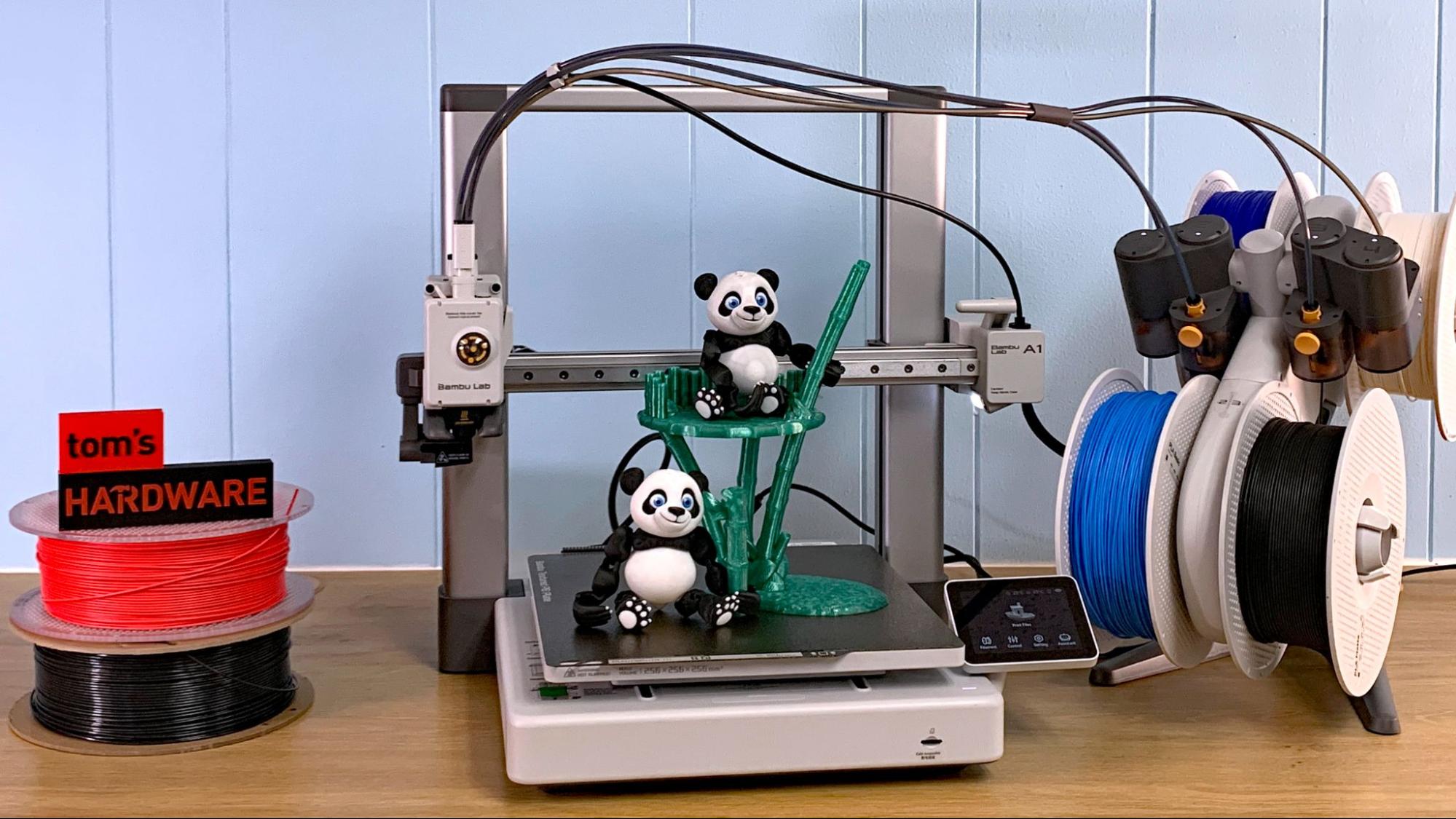
Fast, Affordable and Multicolor
Bambu Lab began taking the 3D printer market by storm in 2022, but in 2023, the company took its offerings to a whole new level. While core XY-style printers like the P1S and X1 Carbon have dominated the high end of the consumer market, the just-released Bambu Lab A1 makes high-speed, multi-color printing affordable for most people.
Starting at $399, the A1 has the same kind of blazing speed we’ve come to expect from Bambu Lab, with a top speed of 500 mm/s. It completed our test print in a blazing 19 minutes and 15 seconds, which is only slightly behind the company’s more-expensive printers. Even better, it has great auto-bed leveling, direct drive and quick-change nozzles.
However, what makes the Bambu Lab A1 stand out most is its optional AMS (automatic material switcher), which adds a modest $160 to the price. The AMS lets you make multicolor models by toggling among 4 different rolls of filament during the print process. Unlike the AMS on the P1S and X1 Carbon, the A1’s unit is easy to fix when there’s a tangle.
Read Review: Bambu Lab A1
- Avram Piltch
Best Single Board Computer: Raspberry Pi 5
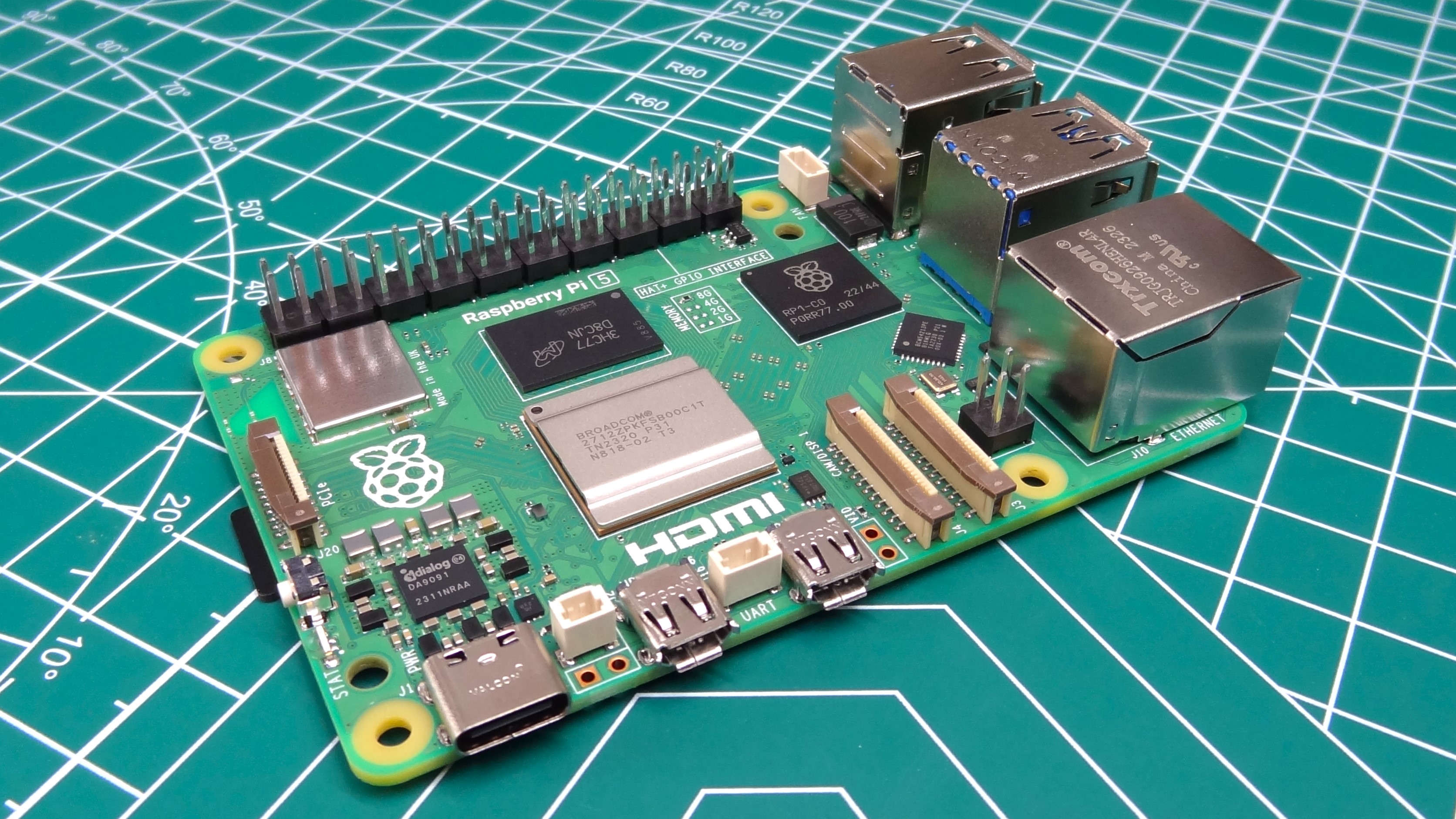
Blurring the lines between SBC and desktop
It is fair to say that the Raspberry Pi 5 was the biggest surprise for makers in 2023. Raspberry Pi CEO Eben Upton stated that 2023 would see no new boards, in order to build stock. But in late October we saw the Raspberry Pi 5 drop and it was met with an audible gasp from the Raspberry Pi community.
The Arm Cortex-A76 64-bit CPU at the heart of the Pi 5 runs at 2.4 GHz, but can easily be overclocked to 3 GHz! It comes with 4 or 8GB, 1 and 2GB models will follow in 2024. The Pi 5 introduces PCIe to the form factor. The PCIe connector can be used with NVMe SSDs and other PCIe devices via breakout boards. Third party boards are already out in the open, with official boards following in early 2024.
The Raspberry Pi 5 is fast, low-power and continues the work of its predecessors. For just a few dollars more than a Raspberry Pi 4, we get a larger slice of Raspberry Pi.
Read Review: Raspberry Pi 5
- Les Pounder
Best Headset: Razer BlackShark V2 Pro (2023)
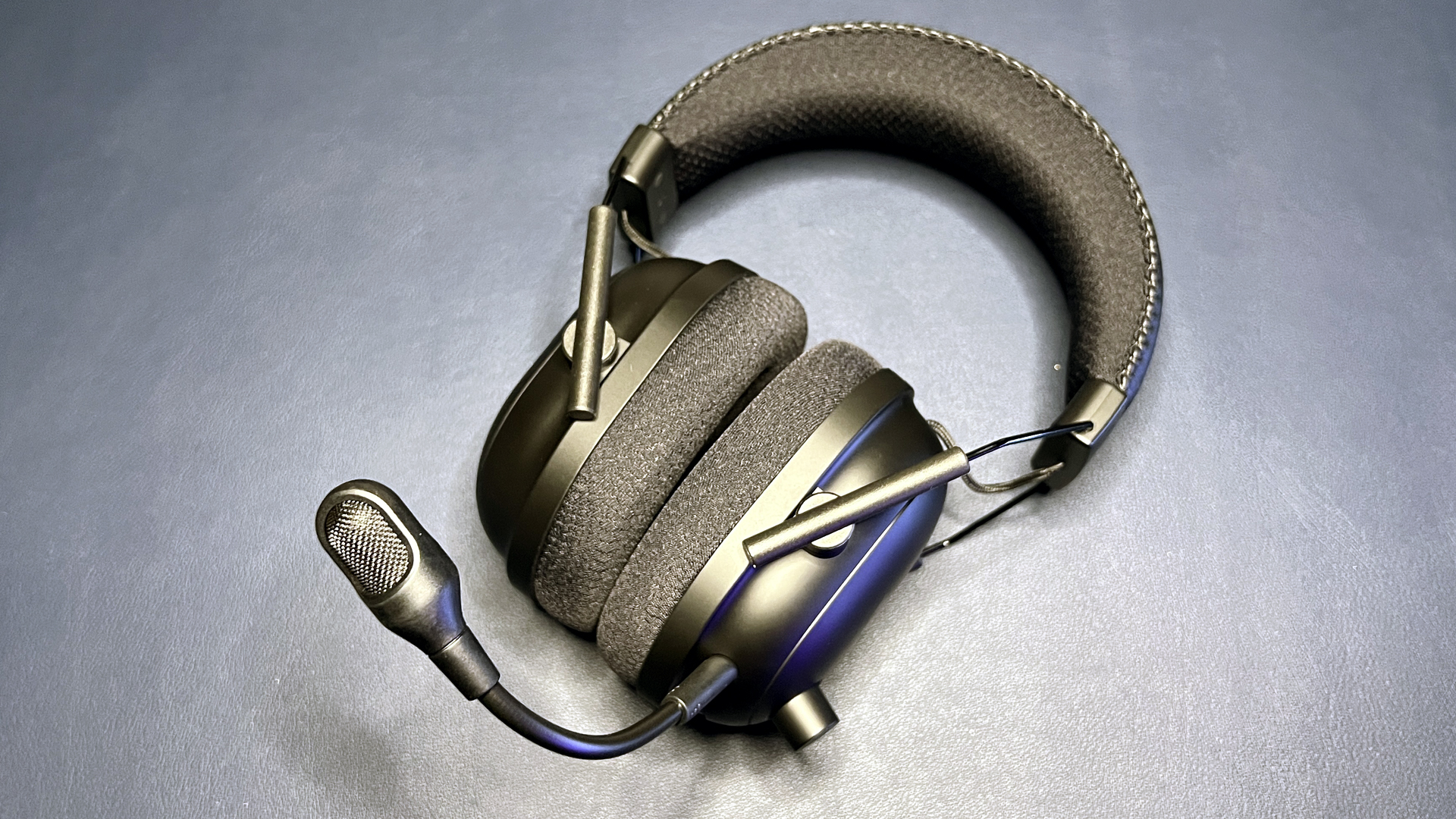
"You sound better than you do in real life."
Razer refreshed its BlackShark V2 Pro headset this year, and the improvements it made were perfect. The BlackShark V2 Pro (2023) has the same overall design as the original headset — all-black construction, a lightweight, easily-adjustable frame, and a padded headband and ear pads covered in cool mesh fabric — and is just as comfortable. It also features the same 50mm titanium dynamic drivers (frequency response range: 12 - 28,000 Hz), with a handful of built-in EQ profiles that can be tweaked in Razer's Synapse 3 software and saved directly to the headset.
What's new: the headset now sports a USB-C charging port (vs. the original's microUSB) and features Bluetooth 5.2 connectivity — though it does not offer simultaneous 2.4 GHz wireless/Bluetooth audio playback. Razer has also significantly upgraded its battery life to 70+ hours from 24 hours.
But the biggest change is the new 9.9mm "HyperClear Super Wideband" detachable boom mic, which has an internal pop filter, a sampling rate of 32 kHz, and is by far the best microphone we've heard on a headset. In the words of senior editor Andrew E. Freedman upon hearing me talk over the BlackShark V2 Pro (2023): "You sound better than you do in real life."
Read Review: Razer BlackShark V2 Pro (2023)
- Sarah Jacobsson Purewal
Best Keyboard: Asus Rog Strix Scope II 96 Wireless
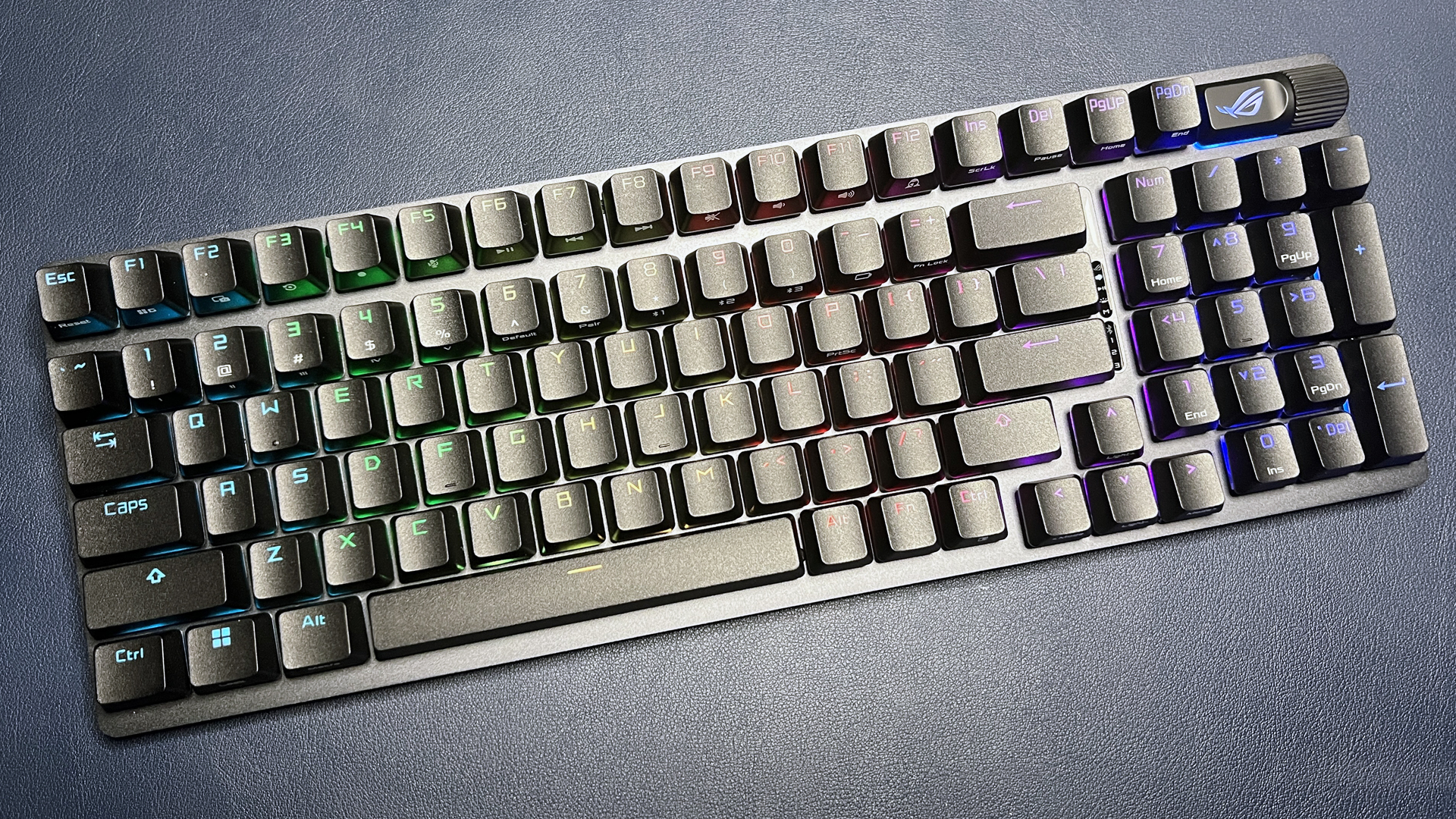
Cheaper than the Azoth, and with a 10-key number pad.
We loved Asus' flagship ROG Azoth keyboard, but we didn't love its $250 price tag. The Asus ROG Strix Scope II 96 Wireless, which debuted at Computex 2023, has a similarly impressive build, better switches, and a more palatable $180 MSRP. The Strix Scope II 96 Wireless is also a 96-percent layout keyboard, giving you a 10-key number pad while maintaining a relatively compact footprint. It's a wireless keyboard, with both 2.4-GHz wireless and Bluetooth connectivity, and it has fantastic battery life: 1,500+ hours (with the lighting turned off).
The Strix Scope II 96 Wireless is very well-built, with an aluminum alloy top plate and extra sound-dampening foam in the case; like the Azoth, it comes with double-shot PBT keycaps and has a hot-swappable PCB. It doesn't come with as many accessories as does the ROG Azoth, but it does come with a matching padded wrist rest (unlike the Azoth) and features Asus' second-gen NX Snow (linear) switches — which are pre-lubed and feel more refined than the brand's first-gen NX Reds.
Instead of an OLED screen in the upper right corner, the Strix Scope II 96 Wireless has a multifunction key (featuring Asus' ROG eye logo) and a volume roller, which are just as functional and less reliant on Asus' terrible peripheral software, Armoury Crate.
Read Review: Asus ROG Strix Scope II 96 Wireless
- Sarah Jacobsson Purewal
Best Motherboard: ASRock Z790 Nova Wi-Fi

Well-equipped, attractive, and reasonably priced
In today’s world of overbuilt and overpriced high-end motherboards, ASRock has been consistently bucking the trend – or at least undercutting the competition by delivering boards that are competitive on features and undercut the competition on price. On top of that, while most board makers pushed out minor refreshes for Intel’s 14th-gen launch, ASRock delivered an entirely new option with the ASRock Z790 Nova Wi-Fi.
Often selling for around $280 (when it’s in stock), ASRock’s Nova board includes six M.2 sockets, native 14th Gen CPU support, and next-gen Wi-Fi 7. It’s also attractive, and performed well in our testing. If you’re building a new Intel rig and want lots of storage and plenty of features without shelling out several hundred more for a flagship board, ASRock’s Z790 Nova Wi-Fi is extremely tough to beat for around $300.
Read Review: ASRock Z790 Nova Motherboard
- Matt Safford
Best Monitor: Samsung Odyssey OLED G9
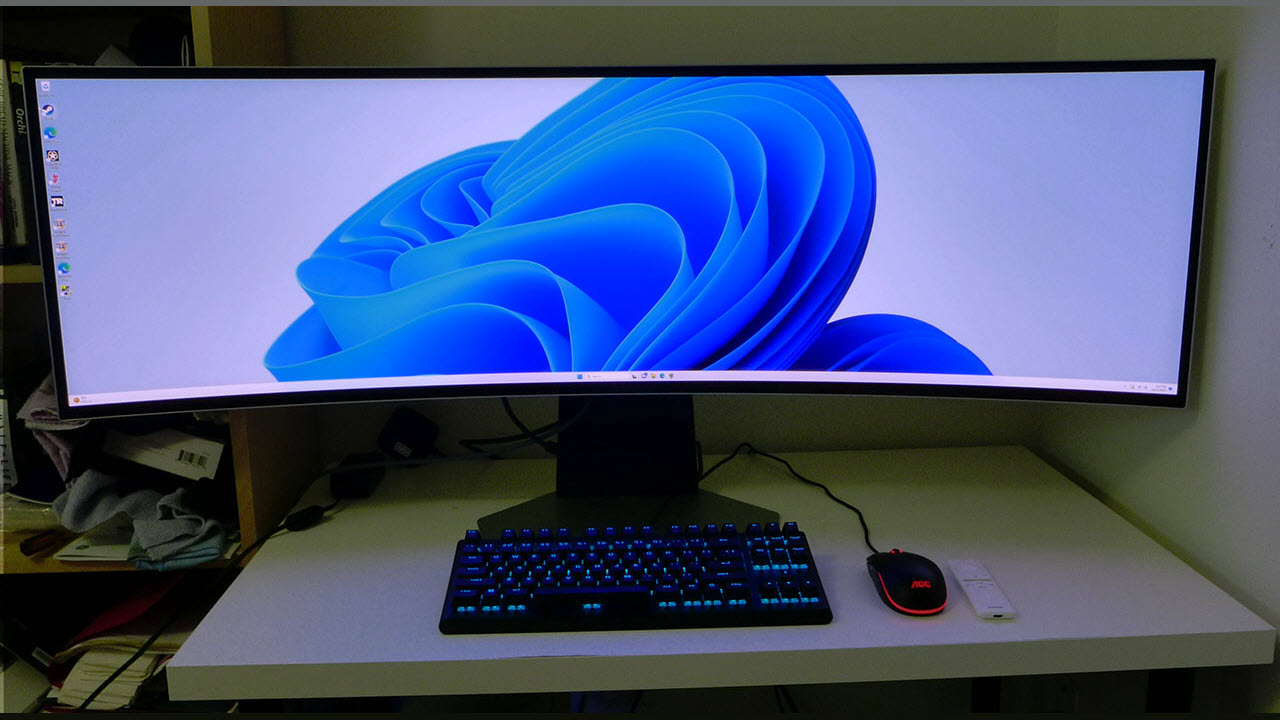
Gaming monitor excess in the best possible way
We love large-format monitors and OLED panels – the Samsung Odyssey OLED G9 combines both of those features with a 49-inch panel size and an OLED panel with HDR10/HDR10+ support.
The Odyssey OLED G9 has a 32:9 aspect ratio with a resolution of 5120x1440 (Double QHD). In other words, you get an expansive workspace for productivity tasks, and gaming looks even more immersive since the 1800R curve dominates your field of view. Speaking of gaming, Samsung infuses the Odyssey OLED G9 with a 240-Hz refresh rate, and it is both AMD FreeSync Premium and Nvidia G-Sync compatible.
While Samsung gets the basics right with the Odyssey OLED G9, it also throws in plenty of extras, including a remote control for the OSD, Bluetooth and Wi-Fi support, and even Apple AirPlay compliance. In addition, Samsung TV Plus and Gaming Hub are included to transform the monitor into a standalone media streaming and gaming powerhouse.
With a street price of around $1,300, the Samsung Odyssey OLED G9 isn’t cheap, but it is an excellent “do everything” monitor that deserves a spot on your desk – as long as you have the space for it.
Read Review: Samsung Odyssey OLED G9
- Brandon Hill
Best Gaming Laptop: Acer Nitro 16
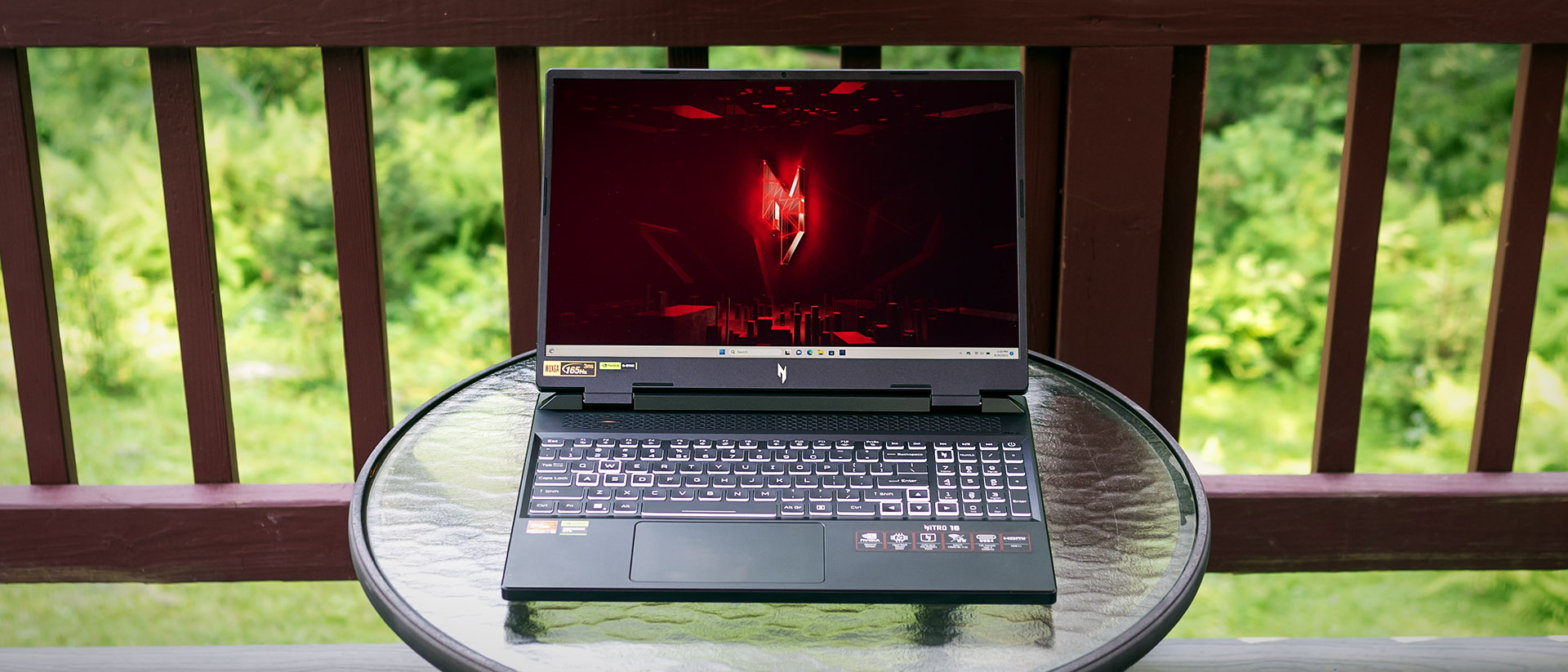
A commendable machine can be had for under $1,000
One of the biggest stories in PC gaming mirrored one in many people's lives this year: prices were sky high. So when Acer redesigned its Nitro lineup to fit in a new 16-inch chassis, and it happened to deliver strong performance and other niceties for under $1,000, we took notice.
The Nitro 16 looks more like a gaming laptop than some of its fancier compatriots, which have been getting more and more subtle. But underneath that shell was competent gaming performance from a Ryzen 5 7650HS and an Nvidia Geforce RTX 4050 in our $999.99 review unit. That also included 16GB of DDR5 RAM and a 512GB SSD.
Add in plenty of ports, including modern USB 4 ports over Type-C, as well as decent battery life for non-gaming tasks (8 hours and 24 minutes on our test) and a bright, G-Sync certified display that can run at 165 Hz, and you get a solid package for the price.
You still get some of the failings of cheap laptops, like bloatware to uninstall and a lackluster webcam, but for under $1,000, Acer packed quite a bit in here, delivering value in a year when a lot of people really needed it.
Read Review: Acer Nitro 16
- Andrew E. Freedman
Best Gaming Handheld: Steam Deck OLED
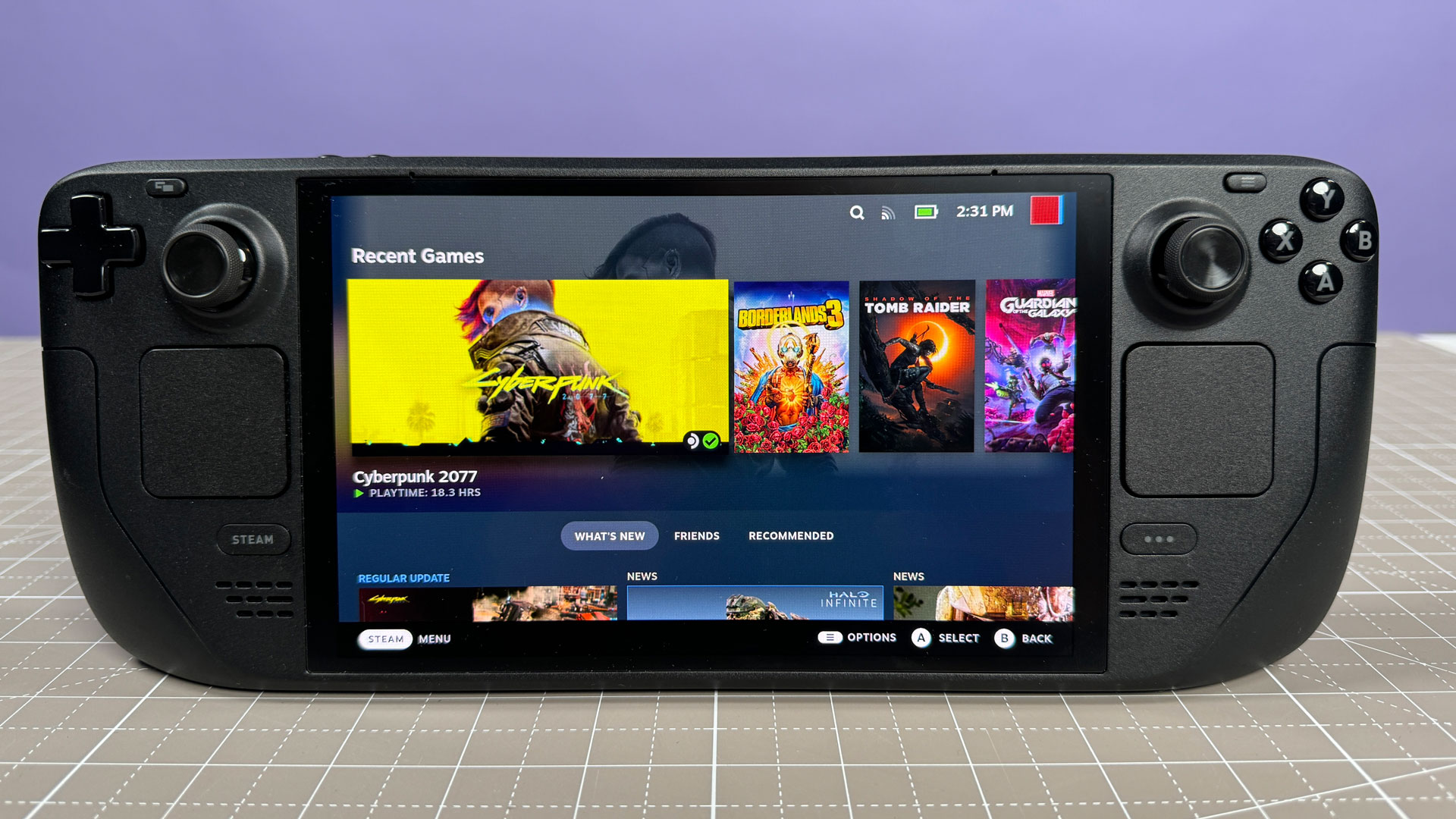
Bigger, brighter, better — and that's just the display.
A year and a half into the Steam Deck's life, Valve has tweaked it to make it better in most ways. It's lighter in the hands, but with a larger, brighter 7.4-inch OLED display that runs at 90 Hz. Adding larger storage options, up to 1TB, are helpful for those who don't want to upgrade their SSD.
There's a larger 50 WHr battery in the new Deck, which adds some playtime in some games, but the most intensive titles still won't last long on a charge. Thankfully, Valve also increased the length of the power cable to 2.5 meters.
Add in faster Wi-Fi and stronger Bluetooth, screws that are less likely to strip when you open your Deck, and grippier joysticks, and there's a lot to love here
In fact, in my eyes, the sum of all of these adjustments are just the cherry on top of the fact that SteamOS is so well optimized for a handheld. While the Asus ROG Ally and Lenovo Legion Go both launched this year with the slightly more powerful AMD Ryzen Z1 Extreme, those handhelds use Windows 11. While those play games outside of your Steam Library, using Windows isn't ideal on a handheld right now. SteamOS on the Steam Deck is far less clunky, making for a more enjoyable experience.
And no one has undercut Valve on price. Some games may struggle on AMD's Zen 2 processor and RDNA 2 graphics, but Valve has value on its side, and plenty of games work on low or medium settings.
Read Review: Steam Deck OLED
- Andrew E. Freedman
Best Productivity Laptop: MacBook Pro
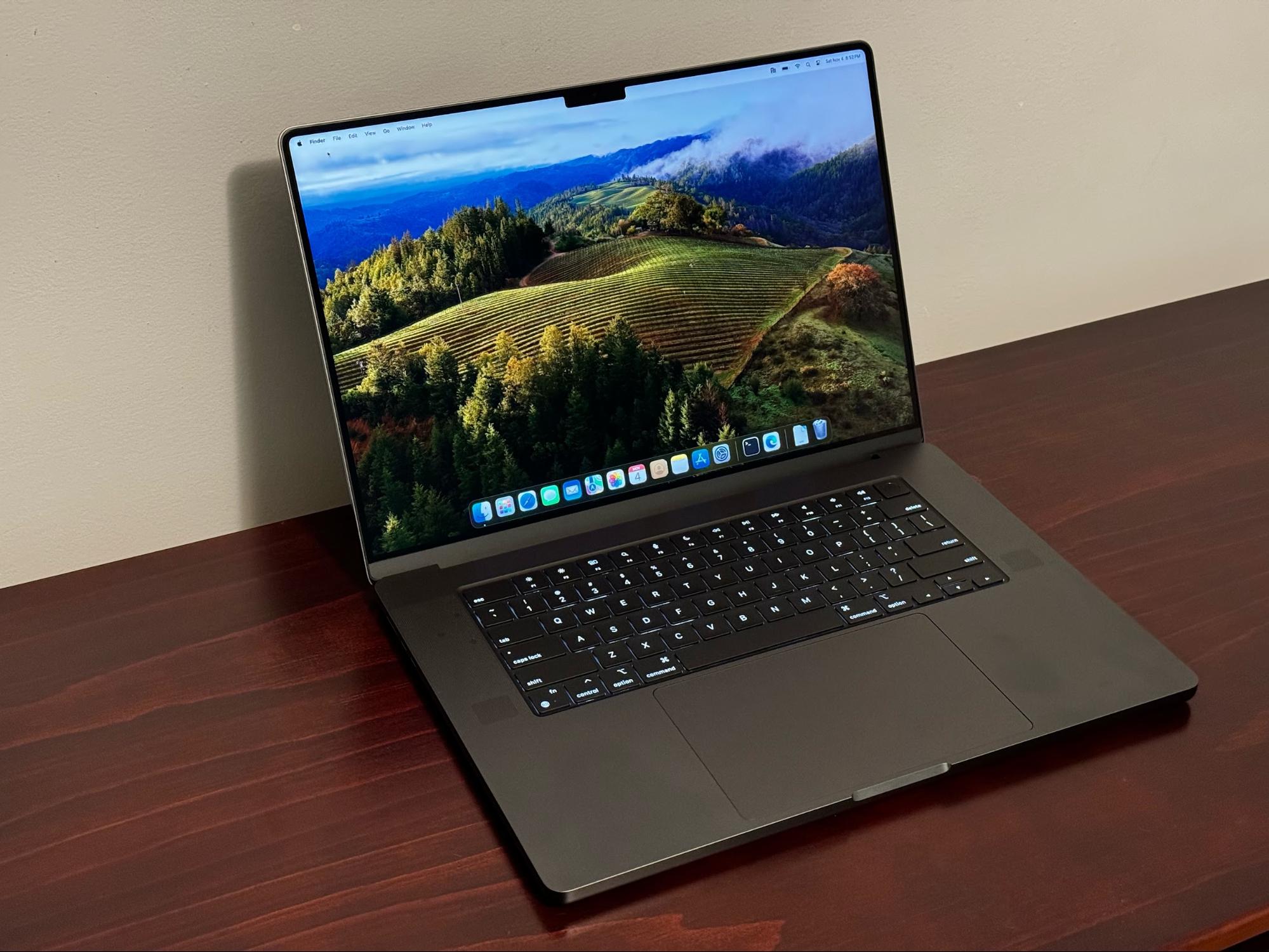
Back in black
I won't tell you that 2023 was the most exciting year for the productivity laptop space. There were lots of refreshes with few new designs. That's part of why the MacBook Pro, which continues to be excellent on Apple Silicon, takes the crown here. The 16-inch MacBook Pro with M3 Max that we tested delivered long battery life, excellent performance, and the best build quality in its class.
(I want to take a break here and say this is specifically for the full-fat 14 and 16-inch MacBook Pro. The new junior entry, which starts with the base M3 and 8GB of RAM for $1,599 is not priced well on paper, and we didn't get to test it.)
In some cases, 2023 was another year of companies chasing Apple Silicon, looking to make more efficient, quieter, cooler computers. We've been teased on Qualcomm's Snapdragon Elite X and big promises of efficiency out of Intel's Core Ultra chips. But we'll start to see these ramp up in 2024. Hopefully they can give Apple more serious competition, especially in battery life.
Oh, and the new MacBook Pros come in black, which reminds me of the black plastic MacBook I envied the looks of back in the mid aughts. That must count for something.
Read Review: Apple MacBook Pro 16-inch
- Andrew E. Freedman







